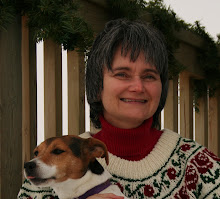 I recently had the pleasure of taking part in a one-day workshop with Diane Green, a well-known local artist, and experienced pastellist. The workshop was hosted by the Temiskaming Palette and Brush Club and was held in their club studio in Haileybury overlooking beautiful Lake Temiskaming.
I recently had the pleasure of taking part in a one-day workshop with Diane Green, a well-known local artist, and experienced pastellist. The workshop was hosted by the Temiskaming Palette and Brush Club and was held in their club studio in Haileybury overlooking beautiful Lake Temiskaming.I have worked quite a bit with pastels and have done some experimenting with them, including working with them "wet", but I was quite interested to see what Diane had to share with us.
I was very excited to see that we would be working on Wallis Pastel paper. This is a very heavy paper with a sanded surface that can take quite a beating - including wet washes. It is my very favourite pastel paper to work with, accepting many layers before becoming saturated. It suits my style of working with pastels perfectly. Unfortunately, it is very difficult to find in Canada. Thankfully, Diane had extra sheets available for purchase, so I stocked up!
After choosing an image to use (I chose a waterlily from one of my own photos - something fairly simple), we made some preliminary thumbnail and value sketches to fine tune the composition.
Next we transferred our final drawing on to our pastel paper with a pastel pencil. Diane then explained and demonstrated how to do the wet part of the process. She explained that we would be doing an underpainting by laying down colours, then wetting them with a brush. She chose colours that were much brighter, often complementary, to the dry colours she would be putting on top. They could be of a lighter or darker value than the top layer. The important thing was that they should help the painting to glow. Here is my wet layer:

The flower will be white and the leaves green, so I chose these colours for the underpainting. Hints of them will show through the top dry layer creating some vibrancy and interest. I'm not sure that I made the best choice for the leaves....
For the next step we added our dry layer on top, allowing the underpainting to show through in places.
 Here I am making a start on the leaves.
Here I am making a start on the leaves. The leaves are mostly done, except for some tweaking. It looks like I got a little carried away with the dry top layer of pastels, and didn't leave enough of the underpainting showing. Oh well, one good thing about pastels, is that it is easy to remove! I have also started on the flower.
The leaves are mostly done, except for some tweaking. It looks like I got a little carried away with the dry top layer of pastels, and didn't leave enough of the underpainting showing. Oh well, one good thing about pastels, is that it is easy to remove! I have also started on the flower. And here is the painting as it was at the end of the workshop. It still needs quite a bit of tweaking - more shadows, some reworking of the leaves, and no doubt some other things which will jump out at me once I get it home and see it with fresh eyes!
And here is the painting as it was at the end of the workshop. It still needs quite a bit of tweaking - more shadows, some reworking of the leaves, and no doubt some other things which will jump out at me once I get it home and see it with fresh eyes!It was a very enjoyable day. Diane is a very enthusiastic and upbeat instructor, and it is always fun to see other artists and their work. Using pastels in this way will certainly add another dimension to my artwork.
I will show you the finished version of my wet pastel water lily in another post!




























No comments:
Post a Comment